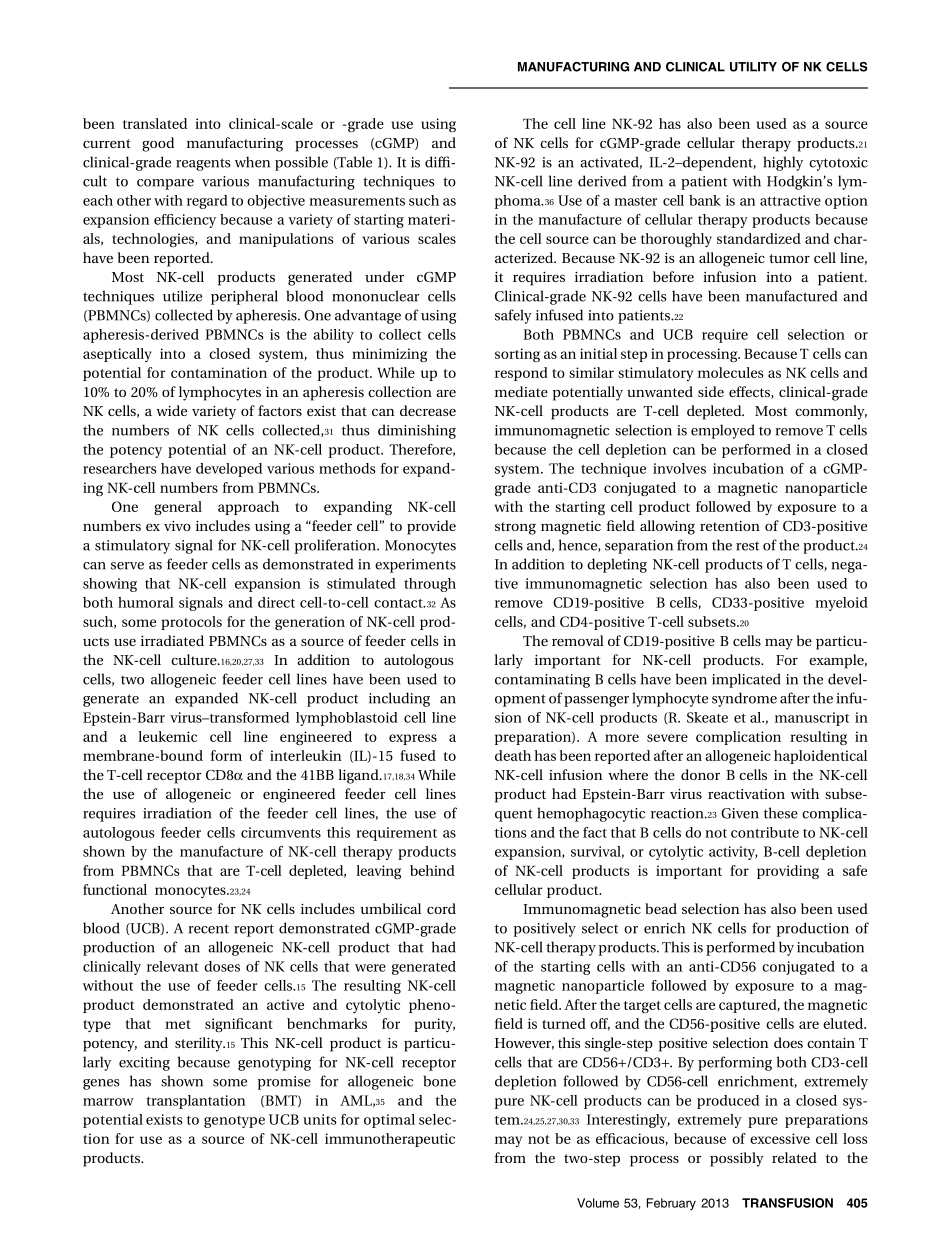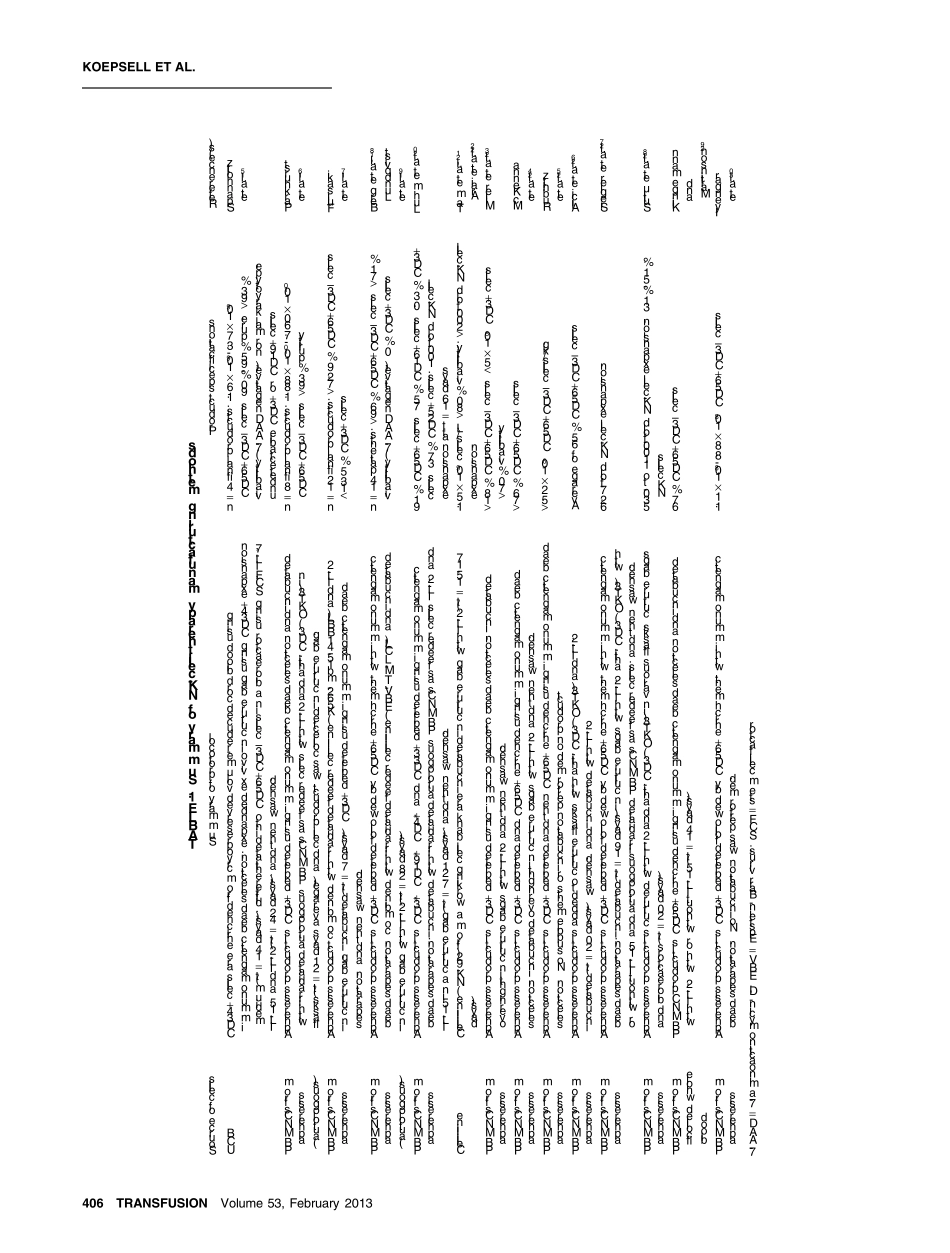P A C T A R TI C L ENatural killer cells: a review of manufacturing and clinical utilityScott A. Koepsell, Jeffrey S. Miller, and David H. McKenna JrNatural killer (NK) cells are a heterogeneousgroup of immune cells that share severalcommon identifying properties. Morphologi-cally, NK cells are large granular lymphocyteswith abundant cytoplasm with azurophilic cytoplasmicgranules.1 Cell surface markers detected by flow cytometryand immunohistochemistry are now standard to identifyNK cells, which are defined by the presence of an isoformof the neural cell adhesion molecule, CD56, and theabsence of CD3, the pan-T-cell marker.2 With thesephenotypic criteria, NK cells are present in significantnumbers, comprising up to 29% of circulating lympho-cytes3 and 5% to 17% of mononuclear cells in hematolym-phoid organs.4Phenotypic NK-cell subsets have differing functionsand anatomic distributions. For example, NK cells canbe broadly divided into CD56bright and CD56dim subsets.Briefly, CD56bright NK cells have low resting cytotoxic activ-ity, are preferentially found in secondary lymphoid tissue,and may represent a precursor to the more cytotoxicCD56dim NK cells that are found circulating in the periph-eral blood.4 Subsets of NK cells can also express CD16, alow-affinity Fc immunoglobulin G receptor that allows NKcells to participate in antibody-dependent cellular toxic-ity.5 Other less-defined and smaller NK-cell subsets havebeen described, and as new surface markers are discov-ered, the definition and functional characteristics of NKcells will be further refined.NK cells were first discovered to recognize and lysecells lacking major histocompatibility complex (MHC)without prior sensitization.6,7 Later, NK cells were shownto lack germline T...


